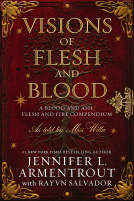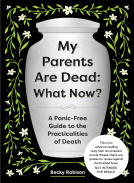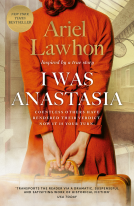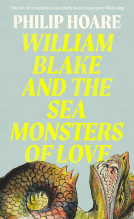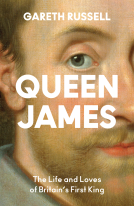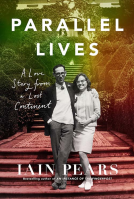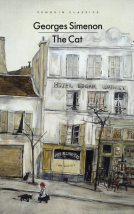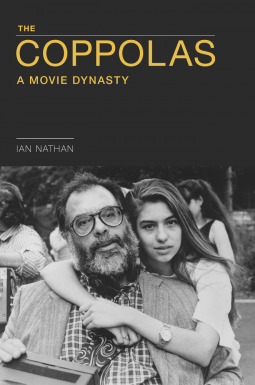
Coppolas
A Movie Dynasty
by Ian Nathan
This title was previously available on NetGalley and is now archived.
Send NetGalley books directly to your Kindle or Kindle app
1
To read on a Kindle or Kindle app, please add kindle@netgalley.com as an approved email address to receive files in your Amazon account. Click here for step-by-step instructions.
2
Also find your Kindle email address within your Amazon account, and enter it here.
Pub Date 30 Nov 2021 | Archive Date 5 Nov 2021
Talking about this book? Use #TheCoppolas #NetGalley. More hashtag tips!
Description
The story of two extraordinary filmmaking generations: father and daughter Francis Ford Coppola and Sofia Coppola.
“You can do anything. But never go against the family.” - Don Vito Corleone, The Godfather.
Their tale is the stuff of legend. The Coppolas are one of the great American filmmaking dynasties, an immigrant family who have thrived in the Promised Land. But for every triumph there is tragedy. For every masterpiece there is a battle against the conformities of the system. For every Academy Award there has been blood, sweat, tears, and sacrifice.
The story is centred on two extraordinary filmmaking generations: father and daughter Francis Ford Coppola and Sofia Coppola. Each in different ways has defined their times. And of course, their stories are intimately entwined.
Francis Ford Coppola stirred up revolution in 1970s Hollywood, risking his fortune, his home, and his very sanity for his vision. But out of chaos he has given the world The Godfather films, The Conversation, Apocalypse Now, and more.
Escaping the shadow of her father, Sofia Coppola has defined an equally personal style all her own, leading the way for women directors in Hollywood. Her radical yet elegant filmmaking has given us Lost in Translation, The Beguiled, On the Rocks, and more.
But the Coppola story encompasses so much more than the careers of two directors. There are subplots extending out across the clan to include Eleanor Coppola, Roman Coppola, Nicolas Cage, Talia Shire, Jason Schwartzman, and others.
Storytelling runs in the blood.The history of the Coppolas also holds up a mirror to the changing face of Hollywood and culture that crosses seventy years and three generations. So this is a book about America, a land of opportunity and the template on which the Coppolas can forge their art.
This is a family saga, an epic, and an opera.
Available Editions
| EDITION | Other Format |
| ISBN | 9781786751225 |
| PRICE | US$29.95 (USD) |
| PAGES | 288 |
Average rating from 15 members
Featured Reviews
The trailblazing story of the Coppola family is vividly told in this first-rate book by Ian Nathan. His narrative has a sense of urgent momentum as he tells of Francis Ford’s early love of films and his unstoppable vision that led him to a job with that master of the B-movie, Roger Corman.
Nearly every member of the Coppola family has been a revolutionary force in cinema - from Francis, director of legendary movies such as “The Godfather” and “Apocalypse Now”, to the groundbreaking films of his daughter Sofia. Other members of the Coppola family, such as his sister Talia Shire and his nephew, the gloriously unique Nicolas Cage, play their parts in this story.
Ian Nathan’s excellent book charts the history of the Coppola family and the changing landscape of American society from the 60s to the present day.
 Chris H, Reviewer
Chris H, Reviewer
First there was the father, Francis Ford Coppola. Having once been told (wrongly) that he would never walk again during a childhood bout of polio as an adult he directed The Godfather, the ultimate family saga and one of the greatest films ever made. Following this up with two more 1970s classics, The Conversation and at time when movie sequels were still unusual, The Godfather Part II. His all-consuming ambition almost overwhelmed him while filming Apocalypse Now, however. Although ultimately a success, the production became almost as sprawling and chaotic as the Vietnam War itself, almost destroying his marriage and his career in the process. Quieter and smaller films have followed since. The Outsiders. Rumblefish. The Rainmaker.
Then there was the daughter, Sofia. Overcoming the widespread criticism which surrounded her acting performance (stepping in for Winona Ryder) in her father's underwhelming Godfather Part III in 1990, Sofia blew discerning audiences away at the end of the decade with her impressive directorial debut, The Virgin Suicides. Soon after that she really made her mark with Lost in Translation, a film which remains one of the most acclaimed American films of the 21st century. so far and made a star of the then still teenaged Scarlett Johansson. Since then, her record has been more mixed: Marie Antoinette completely divided audiences, The Bling Ring generally underwhelmed them, The Beguiled impressed the arthouse crowd while never attracting big audiences.
This is mainly their story but it is also the tale of the other Coppolas.. Talia Shire, Francis's sister who played Connie in The Godfather films and Adrian, the love of boxer Rocky Balboa's life, in the Rocky films. She is the mother of director and actor, Robert Schwartzman as well as the actor and musician, Jason Schwartzman, best known for his roles in Wes Anderson films notably Rushmore as well as in his cousin Sofia's Marie Antoinette as well as Edgar Wright's Scott Pilgrim Vs The World and many other films and TV shows. Then there is rising star, Gia Coppola, the promising young director of Palo Alto. Her father, Gian-Carlo (the son of Francis and sister of Sofia) was tragically killed in a speedboat accident while Gia was still in the womb in 1987.
Not to forget, Nicolas Coppola, the son of Francis's late brother, August, now known as the Oscar-winning actor, Nicolas Cage. Initially making his mark in his uncle's 1980s films Rumblefish and Peggy Sue Got Married, Cage (who took his adopted surname from the comic character, Luke Cage) is sometimes erratic (he has been married five times forging a familial link between the Coppolas, the Presleys and the Arquette acting dynasty) but has enjoyed enormous success working alongside the Coens, David Lynch and John Wu.
This is a fascinating account of a family whose own saga has become inextricably linked to the unfolding story of American cinema.
 Maria M, Librarian
Maria M, Librarian
I read this ARC for an honest review
All thoughts and opinions are mine
Really enjoyed this and would highly recommend
Well written an researched
Fascinating
The Godfather Trilogy are some of my favourite movies ever and that is down to Mr Francis Ford Coppola. Yes I know the original material came from Mario Puzo's novel The Godfather but FFC brought it to life.
This is the story of Francis and his daughter Sophia and their career within the movie industry. This isn't just your straight forward a-z filmography, this book highlights the similarities between the Coppola Family and the many award winning films they wrote/produced/directed, with some background for each film and what was happening at the time.
This is quite well written and I breezed through it.
If you are a fan of their work you will particularly enjoy this book.
Ian Nathan, The Coppolas A Movie Dynasty, Palazzo, 2021.
Thank you NetGalley for this uncorrected proof for review.
Ian Nathan has written an insightful and exciting contribution to our understanding of writing, directing and producing films; the role of family and ability in a dynasty such as the Coppolas; the studio system, and the contribution of film finance, box office returns and reviews; to the success of a film that begins with an idea that impels people such as Francis Ford and Sofia Coppola toward creative endeavour.
Francis Ford and Sofia Coppola are the stars of this book. However, other members of the Coppola family also make contributions to the Coppola dynasty’s work, and they are also given a place in this absorbing story: wife and mother, Eleanor Coppola; sister, Talia Shire; brother, August; sons, Gio and Roman Coppola; cousin, Nicholas Cage (formerly Coppola); granddaughter, Gia Coppola. So, too, are the actors who took their place, successfully or sometimes perhaps not, in the films. His father, Carmine, makes an appearance. Here a story Nathan relates about a prank played on him by Francis Ford Coppola is very sympathetic to him, rather than acknowledging the impact on the father – an interesting comment on the investment Nathan makes in his portrayal of the son.
The bibliography is wide ranging. In addition, each chapter is supported by details of the material which has contributed to the chapter, taking the place of an index. The flow is not marred by citations, and this works well for a book in which the author’s feelings and interpretations are an important contribution to the way in which we are led to see this dynasty. Nathan’s impact is important – leading us to understand not only the people, but the films they wrote, directed, acted in – and on occasion, recut, reinterpreted, and brought back to the world in a form that was impossible originally.
In the earlier part of the book there is a plethora of directors, studios, producers whose work is explained, giving the book an openness that is particularly appealing. This openness contrasts with the inwardness of Coppola, whose writing and direction are so much a part of his being that the rest of the world might not exist - until he suddenly cooks pasta takes his children on exciting jaunts, gives Eleanor attention and appreciation. Interestingly, I thought that the writing in the later part of the book was more inward looking, the Coppolas, rather than their broader environment were the narrow focus. I would have liked detail about the way in which changes to developing films impacted on the dynasty. There is mention of television, and films made for Netflix, for example, but perhaps a stronger comparison of these formats with the old system under which Francis Ford Coppola worked would have made a fascinating addition, maintaining the pattern of the early chapters.
The Coppola films are more than adequately treated. Nathan draws us into The Godfather and its sequels relaying a strong understanding of Coppola’s aims; the stress and darkness of filming Apocalypse Now is fully grasped; and the way in which Coppola regarded Peggy Sue Got Married, somewhat amusing. Sofia’s Lost in Translation was so sensitively covered it reminded of how much I appreciated the film; commentary on other of her films made me want to see more. The deft comparisons made between the two stars of the book are beautifully realised - we understand that they come to their work differently and execute their ideas under very contrasting constraints. But, like a script writer, Nathan ‘shows rather than tells’ this difference. He is also adept at drawing Eleanor and her feelings into the story. The account of her work is both moving and satisfying - more than wife and mother at last!
The Coppolas A Movie Dynasty is an easy and engrossing read. It is a satisfying account of the dynasty; the world of film, particularly during the reign of the studio system; and a wonderful rendition of the ideas, work and feeling behind the Coppola films.
The Coppola Family’s Love Affair with the Movies On Screen and Off Screen… Reading Ian Nathan’s comprehensive biography you’ll find the Italian-American Coppola family has brought all kinds of entertainment to our film world experience.
The Godfather II (1975), tells the origin story of Vito Corleone, an Italian who emigrates to America at the turn of the 20th Century. After settling in America, Vito marries and has children. Thus begins the American-Italian crime family business that transcends over three generations. Their story is told in this acclaimed film trilogy, and this second film was a sequel and a prequel. It expanded on the tale of Vito’s son Michael and told of Vito’s rise in the Mafia. All three films when pieced together in a linear fashion tell of the rise and career of this Mafia Don and his youngest child, Michael.
The name Corleone in these films is synonymous with one of the more famous names in Italian American movie history, Francis Ford Coppola. Francis also directed these movies and wrote the screenplays with Mario Puzo. Francis was chosen to direct by the then studio head, Robert Evans for his Italian-American connections, and so as you “could smell the spaghetti” and therefore tell the tale from an Italian-American’s view. Coppola worked on all three of these movies, working with his close family on and off-screen.
Ian Nathan’s The Coppolas, A Movie Dynasty (2021) like this film trilogy studies the Coppola family more fully in both their lives and the rise and fruition of their filmmaking careers to the present date. The fiction in the Corleones story could also relate to real-life facts relating to the Coppolas, as you read this book you discover the Coppola family also have their roots in Italy. Also as a family, they have left their mark on the same business – this time the American movie industry – over five generations (so far).
The Coppolas links to Hollywood begin with two Italian emigrants. Nathan tells that both Francis Ford Coppola’s grandfathers, Francesco Pennino and Augustino Coppola came to America in the early 20th Century. Pennino, a musician worked at Paramount composing musical scores for silent movies and later ran a string of movie theatres. Augustino – an inventor – was at Warner Brothers and assisted with the creation of the Vitaphone and this was “the machine that could make movies talk”.
Francis father, Carmine Coppola studied at the Julliard school and he was a renowned orchestra flautist and he arranged music for the Rockettes chorus line. In time, he became a film score composer. Carmine worked with both his middle son, Francis and for other film directors, with the latter including work in movies such as The Black Stallion (1979) and THX 1138 (1971).
He and his wife, Italia had three children, his first child, August, had a career in the Arts and his career has included working as an executive at his brother Francis’ film studio, Zoetrope Studios. August’s siblings were destined for Hollywood careers, are the director and screenwriter, Francis Ford Coppola and the actress, Carmine’s youngest child, Talia Shire.
Francis Ford Coppola’s wife Eleanor and their children all worked both behind the scenes as filmmakers and have also appeared on-screen in film. Nowadays, Francis’ daughter Sofia directs movies and Francis’ granddaughter – to his late son, Gian-Carlo – Gia has now also embarked on this career with such films as Palo Alto (2013). You could argue for nature or nurture for these family filmmaking career decisions for hours.
In his sterling extensively researched biography The Coppolas, A Movie Dynasty, Ian Nathan divides his book into two sections, these focus on Francis and Sofia. These parts of the book are then divided further into chapters for each section, with titles for Francis and Sofia such as Leave the Gun and Take the Cannoli and Tokyo Drift respectively. These titles come with subtitles that list their films which are discussed throughout those pages.
You’ll find these sections do not dwell exclusively on these two prolific names. Other filmmaking Coppola family members – as well as other on and off-screen Hollywood names – relevant in their life stories, are also given their time in the spotlight, when pertinent. In Nathan’s rich biography, he adds their shorter biographies and thus expands this filmmaking family tree and Hollywood history.
Francis’ wife Eleanor, is a film documentarian – for her husband and daughter’s work – and artist who also recently directed and wrote the screenplay for her first feature film, Paris Can Wait (2016). His sons, Roman and the late Gian-Carlo have both made contributions to American movie history, and all three have worked with and without close family members.
The extended Coppola family include his youngest sister, Talia and her son from her second marriage, Jason Schwartzman. In addition, Francis’ older brother, August was the father to Nicolas Cage. Cage has starred in many films including Moonstruck (1987) and The Rock (1996). The Coppolas and their extended family are referenced throughout this biography.
Nathan outlines Francis’ life and believes his desire to entertain others had its inception in 1949, in post-war America. At this time, Francis was diagnosed with polio as a child. This illness resulted in a paralysis of his back, left leg and arm. He was nine years old, contagious and alone with only his siblings, older brother August and younger sister Talia for company.
Francis then allowed “his imagination to roam where his body couldn’t”. He spent his time glued to the television. Nathan argues convincingly that Francis’ childhood fueled his love for entertaining others. Over this time, Francis was “reborn” after his father Carmine sought out a physiotherapist and over time he was taught to move these limbs again.
Many of Francis’ childhood experiences and television loves from this time, were later reflected on and added to his movies. It appears as a child, Francis told stories and made shows for his family. He dreamt about owning a film studio, was given a projector and refashioned family movies with his own scripts.
Nathan tells how these childhood experiences are all echoed in his later life true experiences with his creation of Zoetrope Studios and his work as Roger Corman’s assistant where Francis redubbed a Soviet movie with his own plot and screenplay. This proving as Nathan puts it so succinctly that “out of adversity comes art”.
This phrase could also be seen to apply to the Hollywood career of Francis’ daughter, Sofia. Sofia began her filmmaking career in a number of small on-screen parts as a bourgeoning actress. But after she was given many negative reviews for her acting in larger roles, she then found her calling as a film director after reading the novel, The Virgin Suicides.
Sofia had written a strong vividly written screenplay after she was inspired by this book and then the making of this film fell into her capable hands purely by chance. Her visionary storytelling in this her debut feature film then led to a flourishing career off-screen career. In her work, she often tells or retells stories from a woman’s point of view. Like her father, she is now a prolific screenplay writer and director.
In reading their biographies, you’ll note both these Coppolas add subtle and direct references to their lives to their film characters and screenplays. Nathan’s book also eclectically demonstrates a deep understanding and appreciation of their movies. These movies are written about in a linear style and analysed in his extensively researched 388 pages. He recently perfectly described his film journey through their works on his Twitter page HERE as
“To tell the story of Francis Ford Coppola is like riding a thunderstorm, and then the hypnotic, elusive calm of Sofia Coppola.”
Nathan writes about both filmmakers’ quite different filmmaking experiences with an unbridled passion for both approaches. It is clear he understands the Coppolas as two different people, as he chronicles the contrasts in their motivations, nuances and movie styles. In reviewing their different film approaches he finds a balance when explaining their unique storytelling roles with a deep analysis of their plots, casts and those happenings behind the scenes.
As his Twitter quote suggests, the making of these films was often a tempestuous undertaking for Francis. This was seen in the making of The Godfather films – which he was initially reluctant to helm – but more particularly as an auteur director on the set for his self-funded opus Apocalypse Now (1979). Nathan gives a full picture of the off-screen events in the making of this movie. He gives a rounded off-screen story and tells of both the difficult and turbulent times and also moments of calm on this movie set.
The latter is beautifully encaptured in Nathan’s short prologue, which tells of Francis in his element, cooking for fourteen people, as a stormy rainy night led to flooding which made it impossible to travel anywhere. Inside Francis cooked pasta and entertained those working on the movie in his on-location residence. His wife, Eleanor documented the story in her diaries as his young children amused themselves happily both in and outside. This vividly described story was a welcome touch to this well-documented film production. As many of those off-screen tales concentrate on the intense strain that this film production had on the Coppola family and the cast.
Yet just seeing the final film, you’ll hear echoes of his past resurface once more, and that out of difficult times come film masterpieces. This film story also adds that lead Harvey Keitel was later replaced by Martin Sheen simply because of his acting style. And this change in events led to Francis’ son Roman and Sheen’s son Charlie becoming good friends as their fathers worked together on this film. Nathan advocates it is a further testament to a stormy off-screen story bearing unexpected fruits, as he tells that Charlie and Roman later worked on a movie together, A Glimpse Inside the Mind of Charles Swan III (2013).
In those chapters on Francis, there are wee mentions of his children as are born, grow up and then Nathan outlines their parts in the making of his films. His children took roles both on and off-screen in a number of their father’s projects. This however was tinged with sadness, as I learnt his eldest son Gian-Carlo, had died in a boating accident offset with a cast member, while Coppola made Gardens of Stone (1987).
However, Nathan tells of happier collaborations between the Coppola family. Nathan tells how those Coppola family team-ups began with the cutest meet-cute. This was as a first-time director Francis meets his wife, Eleanor as she worked in the Art Department of his film, Dementia 13 (1964). Eleanor met her future husband typing away the screenplay wearing only pyjama bottoms.
Over the rest of this book, you’ll learn these family team-ups often have Sofia or Francis directing or working alongside family members on and off-screen. Examples include his father Carmine who becomes an Oscar-winning composer for his work on this son’s film, The Godfather Part II. Francis sister, Talia also works with him on this movie trilogy. Francis directs Sofia and his nephew, Nicolas, in Peggy Sue Got Married (1986).
Sofia directs their cousin Jason Schwartzman in a role in Marie Antoniette (2006) and her brother Roman co-produces a Wes Anderson film with Schwartzman, The Darjeeling Limited (2007). More recently his granddaughter Gia directed Schwartzman in Mainstream (2020). These familial themes are reflected in their films such as The Godfather and more recently in Sofia’s father-daughter themed movie, On the Rocks (2020).
Reading on these film’s casting, the Coppolas could often be accused of nepotism. But for me, this takes a different turn after reading this biography. As when reading more of these on-screen off-screen family team-ups in this book, I believe this tells more about the Coppola family and their ingrained strong family loyalty.
So I suggest when reading this book, put Francis at the hub of the movie reel that is the Coppolas’ movie-making experience. This makes Eleanor’s and his meet-cute just the start of an extended family biopic or family movie which has continued over the decades to the present day.
You will find that when this never-ending reel of films are read about in Nathan’s book and this linear approach, these films show each member evolve and grow over the years. This is in a succession of works for the family, by the family. Their contributions to each other works as filmmakers or performances could be seen as a Coppola family movie universe or an ongoing family movie on and off the screen.
Family members working together perhaps are more natural in their filmmaker roles, possibly because they are more relaxed with the on set presence of these solid familial ties. Where these words from Francis Ford Coppola himself, as a patriarch, son, brother and uncle resound true;
“We support each other in the Coppola family. We love the idea of everyone getting his place in the sun.”
And this resulting in a shining performance, as Coppola and Puzo’s The Godfather I (1972) script argues;
“A man who doesn’t spend time with his family can never be a real man.”
Readers who liked this book also liked:
Jennifer L. Armentrout and Rayvn Salvador
Reference, Romance, Sci Fi & Fantasy
Becky Robison
Business, Leadership, Finance, Parenting, Families, Relationships, Self-Help
Ariel Lawhon
General Fiction (Adult), Historical Fiction, Mystery & Thrillers
Philip Hoare
Arts & Photography, Biographies & Memoirs, Nonfiction (Adult)
